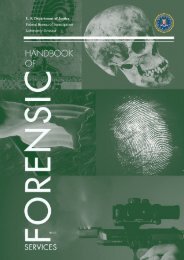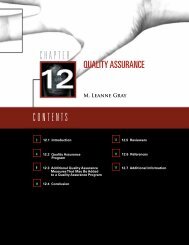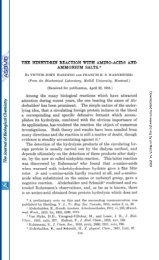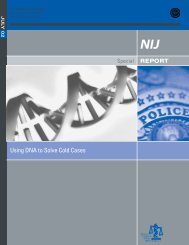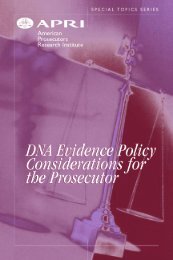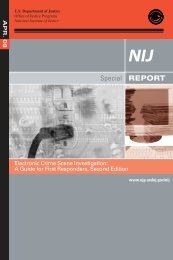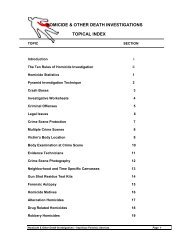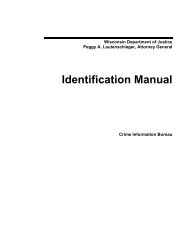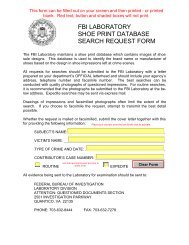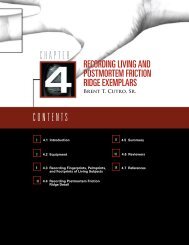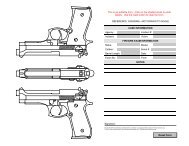Mass Fatality Incidents: A Guide for Forensic Identification
Mass Fatality Incidents: A Guide for Forensic Identification
Mass Fatality Incidents: A Guide for Forensic Identification
- No tags were found...
You also want an ePaper? Increase the reach of your titles
YUMPU automatically turns print PDFs into web optimized ePapers that Google loves.
SPECIAL REPORT / JUNE 05C. Contact the legal next of kin not presentat the FAC:1. Schedule appointment times to contact family members.2. Review antemortem collection procedures with family members overthe telephone.The medical examiner/coroner or designee mayneed to have victim records in <strong>for</strong>eign languagestranslated. See “Section 6: OtherIssues” <strong>for</strong> details.3. Ensure that the interview is privateE. Establish a location to receive all inandconfidential.coming antemortem data and samples(expected to be sent via an express4. Complete a personal interview <strong>for</strong>m delivery service or brought to a receivfollowingeach telephone interview. ing area other than the morgue by aD. Identify antemortem data/samplefamily member).resources: F. Notify the legal next of kin when ante1. Samples provided by the legal nextmortem data and samples have beenof kin:received.a. Dental records. G. Maintain a log of all incomingdata/samples.b. Medical records (including antemortemradiographs/x-rays).c. Fingerprints (derived from lawen<strong>for</strong>cement, military, andemployment records).d. Photographs.e. Biological samples (e.g., tissueblocks, slides, and DNA reference samples).H. Direct all data/samples to the morgue<strong>for</strong> review and analysis.Summary. Consider the wide range ofantemortem in<strong>for</strong>mation that can aid inidentification.44




